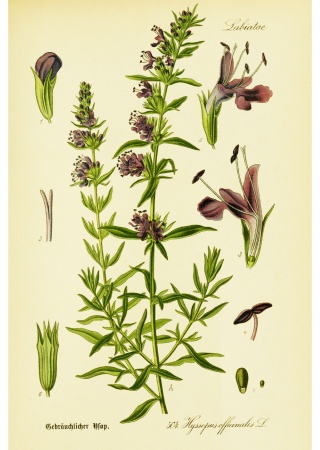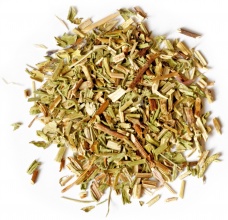Hyssop
- …the aroma of hyssop repels the cabbage butterfly?
- …in Arab countries, fermented hyssop leaves are used to make sherbet, a refreshing, mildly alcoholic drink?
- …hyssop gives people a nice color, strengthens vision and clears the brain?
- …hyssop is used as a gargling agent for infections of the throat and tonsils?
- …hyssop is an antiperspirant?
- …fresh hyssop leaves have 5 times more vitamin C than a lemon?
- …the scientific name Hyssopus comes from the Hebrew word ezob, a name for sacred and cleansing plants?
- …hyssop as a spice is the tops and flowers of the Hyssopus officinalis plant?
Carrots with hyssop
500 g carrots
250 ml meat broth
1 tablespoon honey
1 tablespoon butter
1 tablespoon finely chopped fresh (or dried) hyssop leaves
ground white pepper
salt
Scrape carrots and slice thinly. In a pot, mix carrots with broth, honey, butter, and salt and pepper to taste. Bring to a boil, cover and let boil gently, until carrots are tender and juice attains the consistency of syrup (about 20 minutes). Mix carrots with hyssop leaves and serve immediately.
Hyssop grows wild around the Mediterranean and Black Sea, all the way to Iran. It is an ancient spice, referred to in the Bible. The Persians used hyssop in face lotions. Benedictine monks brought the shrub to Europe across the Alps in the 10th century. During the Middle Ages, hyssop was cultivated primarily in monastery gardens as a spice. It is interesting that recently a fungus was discovered on hyssop leaves that produces a natural antibiotic.


